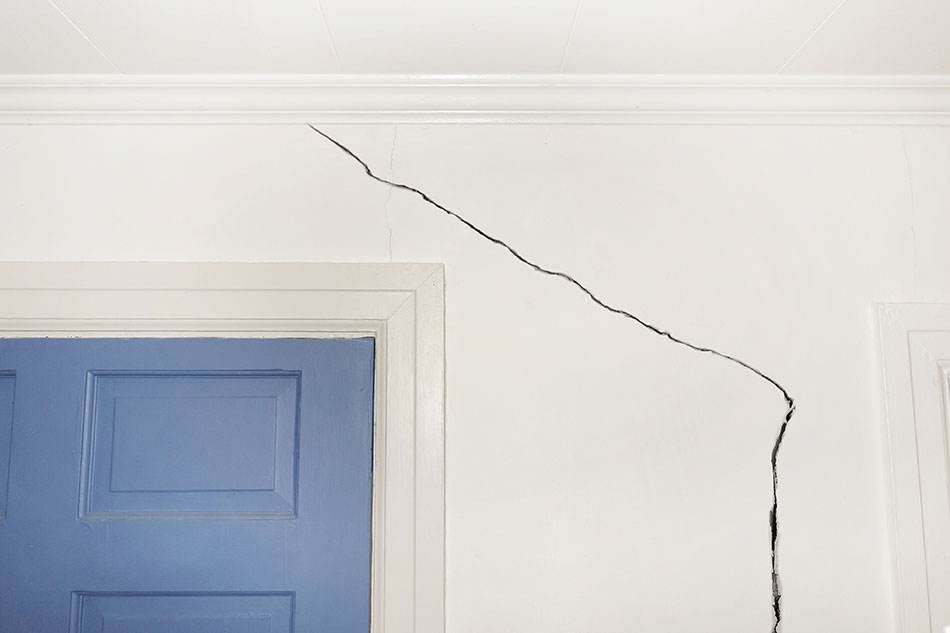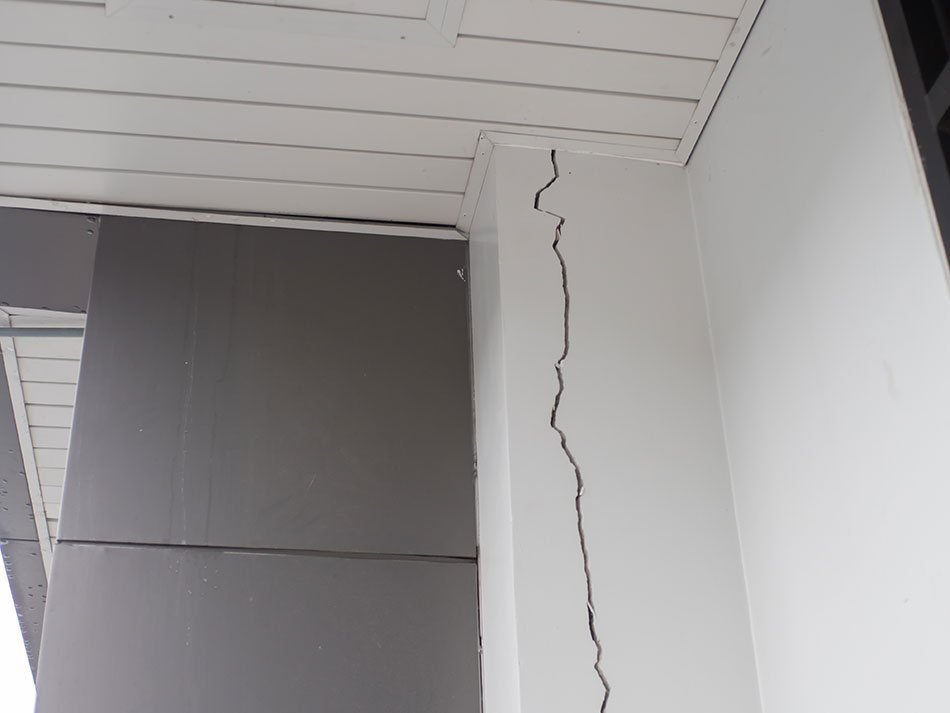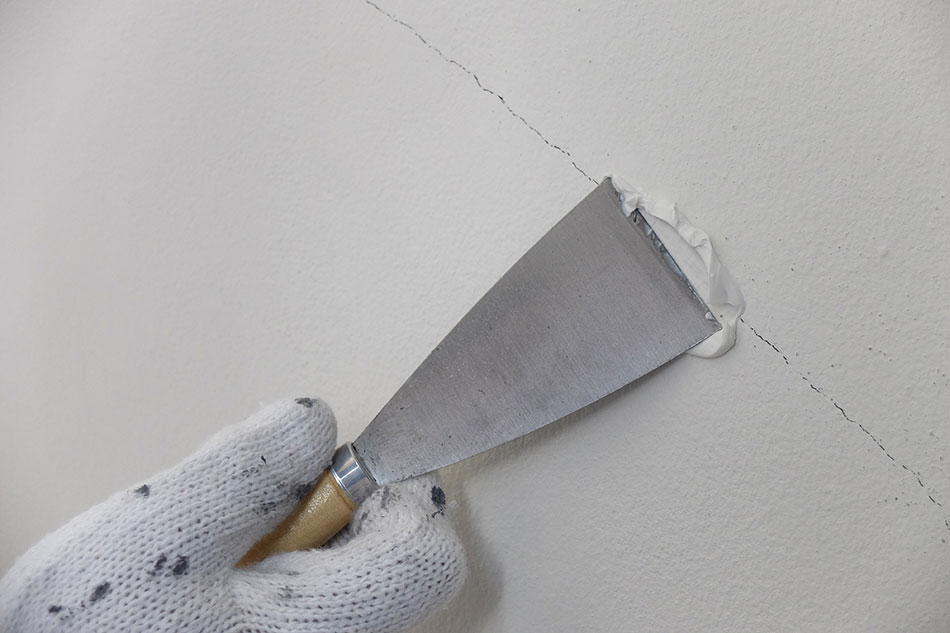Cracked wall – repairing a damaged substrate
A cracked wall is an eyesore and makes the inhabitants anxious. Generally unnecessary – cracks are a natural symptom of the structural elements of newly constructed buildings settling. Is there a fast and effective way to repair them? This is our guide.
Repairing a cracked wall is usually a task a DIY’er can handle. This is especially true if products from the Śnieżka Acryl Putz brand are use, which also include specialist products for repairing this type of crack.

How do I start filling cracks?
Start by removing loose material, dust and rubble from the crack. Scrape the plaster from the edge of the crack at a 45-degree angle – this will increase the adhesion of the repair compound later. Then apply a polymer primer to the surface of the crack – this binds loose elements and ensures proper drying of the repair compound.

After the time specified on the label, the crack can be filled with Acryl Putz Flex FX23 repair compound. It is a ready-to-use product with glass fibre – it contains a special polymer resin which significantly improves its strength and determines its excellent adhesion of the repair compound to the surface. When dry the compound leaves a transparent film with visible fibres. Due to its high and permanent elasticity, it can be applied to cracks up to 5 mm wide without the need for reinforcement tapes. Single coat drying time: 6 hours. Apply a second coat once the first is dry. When completely dry, the Acryl Putz Finish FS20 can be applied to the crack-filled surface which contains a special polymer resin. This improves skim coat parameters and determines its excellent substrate adhesion.

Acryl Putz Finish FS20 skim coat is a top-quality product recommended for final, finishing smoothing of wall and ceiling surfaces using manual and machine methods. Once dry (may take up to several hours),it is exceptionally easy to sand while maintaining very good strength parameters. It leaves brilliant white and perfectly smooth surfaces to be painted.
The entire process of filling gaps in walls caused by the crack takes a total of 3 days. It is not worth reducing the time you wait for successive layers to dry, as this will have a bad effect on the durability of the filling. Haste is not advisable in this case. At the same time, repairing a crack is so simple that you can do it yourself, saving 3 days builders’ wages.

Can cracks be a hazard?
In some cases, repairing wall cracks and hairline cracks should be left to professionals. If a crack runs almost vertically along the entire height of a load-bearing wall, or forms a stepped line, then there is cause for concern. Such a crack should be dealt with by a professional. Similarly with ceiling cracks running across beams near the centre of the room or close to the walls. Such cracks may be a sign of overloading, deflection of the floor-ceiling assembly or excessive pressure in the load-bearing zone.

